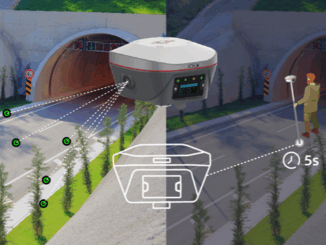
Kenneth Ang, Project Manager and geomatics Lead at Terra Remote Sensing, recently presented at Lidar CANEX 2024 on LiDAR for post-wildfire mapping applications.
Kenneth provided an overview of Terra Remote Sensing, with a specific focus on British Columbia. He mentioned that the company has used lidar data to map over 10% of British Columbia for various purposes including forestry, highway and corridor mapping, as well as First Nations coastal monitoring.
The presentation listed four types of wildfire mapping
- Pre-fire – involves examining the risk assessments and identifying potential accelerants that could contribute to a wildfire.
- During the fire – involves monitoring the fire while it’s occurring, which can include hot spot mapping.
- Immediate post-fire – to assess the damage that has occurred immediately following a wildfire.
- Long-term post-fire – the main focus is studying the regrowth of vegetation in areas affected by wildfires and assessing the area’s safety post-wildfire. This can be linked to the initial step, pre-fire, to evaluate any additional wildfire risk in that region.
The presentation focused on two recent wildfires on Vancouver Island.
Zeballos, BC
In 2019, a wildfire swept through the town of Zeballos, BC. The Canopy Height Model comparison between DSM data from 2015 and 2021 illustrated the extent of vegetation loss in the area. This presentation points out that the difference in the presence of trees after a wildfire can provide valuable insights into the stability of the slope in a particular region. It’s also noted that it’s important to take into account how logging activities can influence wildfire risks.
Cameron Lake, BC / Hwy 4
In June 2023, a wildfire broke out near Hwy 4, resulting in its closure. Hwy 4 is a popular route for travelling around Vancouver Island and for tourists heading to Tofino. With no alternative paved route available, travellers were forced to use a logging gravel road with minimal cell service. Concerns about slope stability arose due to the amount of water used to fight the fire, prompting Terra Remote Sensing to work with the BC Ministry of Transportation and Infrastructure to conduct lidar surveys to create relief maps and identify areas with steep slopes.
Kenneth emphasizes the importance of understanding slope stability after a wildfire to prevent landslides, which are a threat to public safety. He also notes that a post-fire dataset can be valuable for conducting slope studies and evaluating wildfire risk in the area.
During the presentation, it was noted that utilizing LiDAR data to create a Canopy Height Model (CHM) is a much more effective method than relying solely on aerial photography to assess slope stability and conduct post-wildfire analysis.
I think it’s interesting to consider using post-wildfire maps not only to analyze the aftermath of a wildfire but also for pre-fire analysis to determine the risk of another wildfire occurring in the near future in a particular region. Evaluating the fuel left behind after a wildfire can greatly assist in determining the risk for future wildfires.
I’ve noticed that in my home province of British Columbia, the wildfire season is not only becoming more intense but also longer in duration. The work that Kenneth and his team at Terra Remote Sensing do is incredibly important, not only in analyzing the aftermath of wildfires but also in efforts to prevent the spread of wildfires.





Be the first to comment